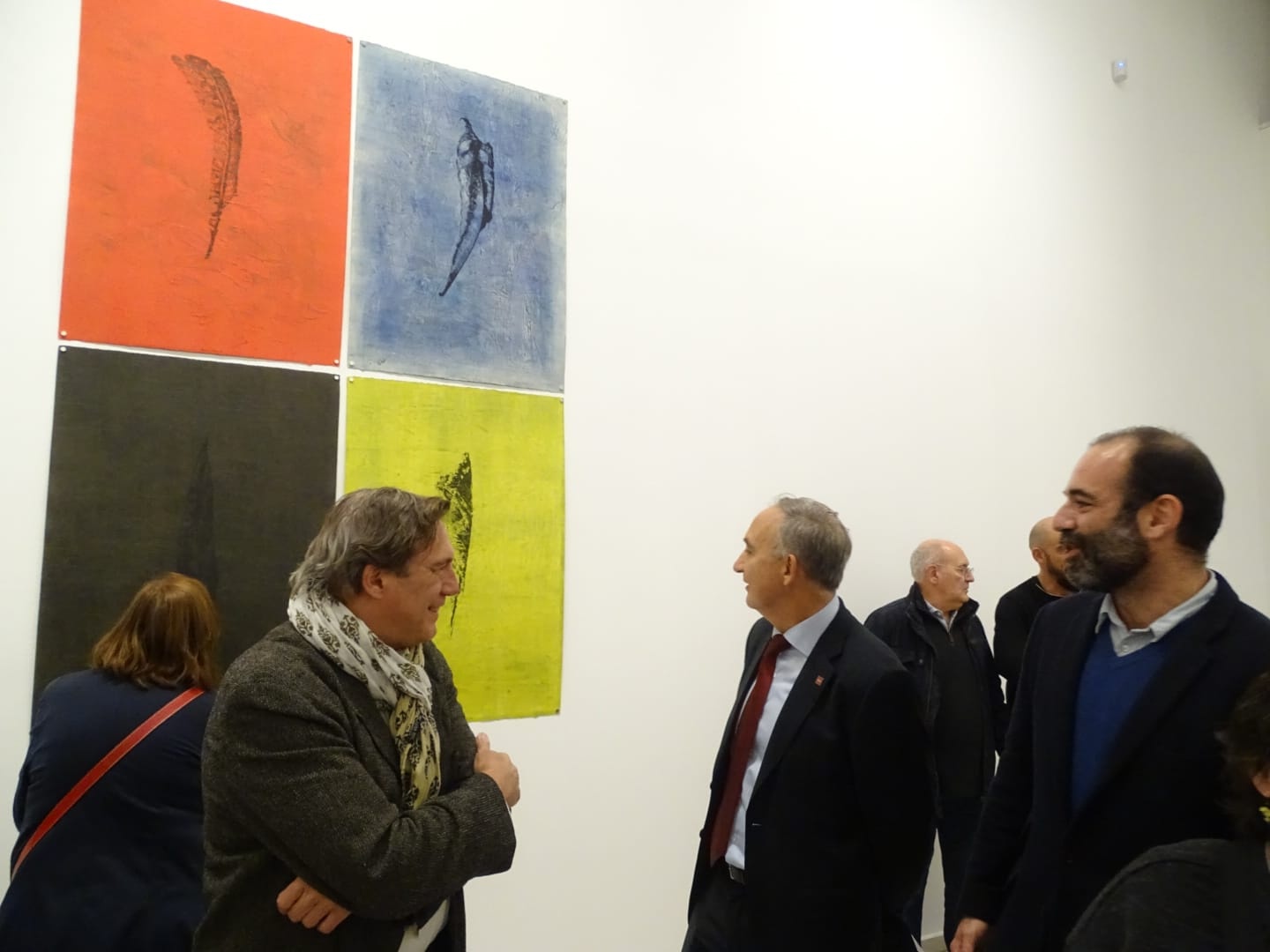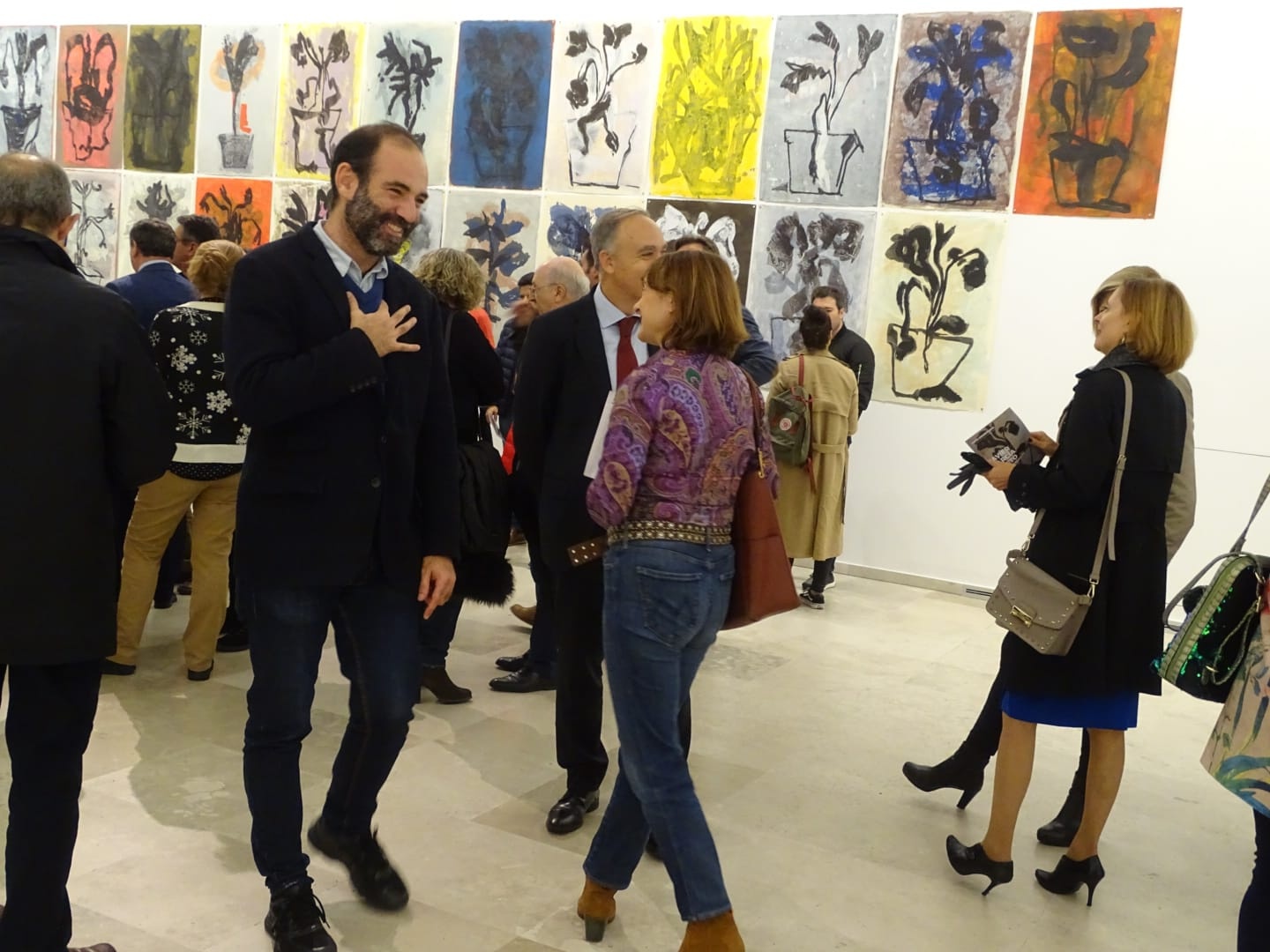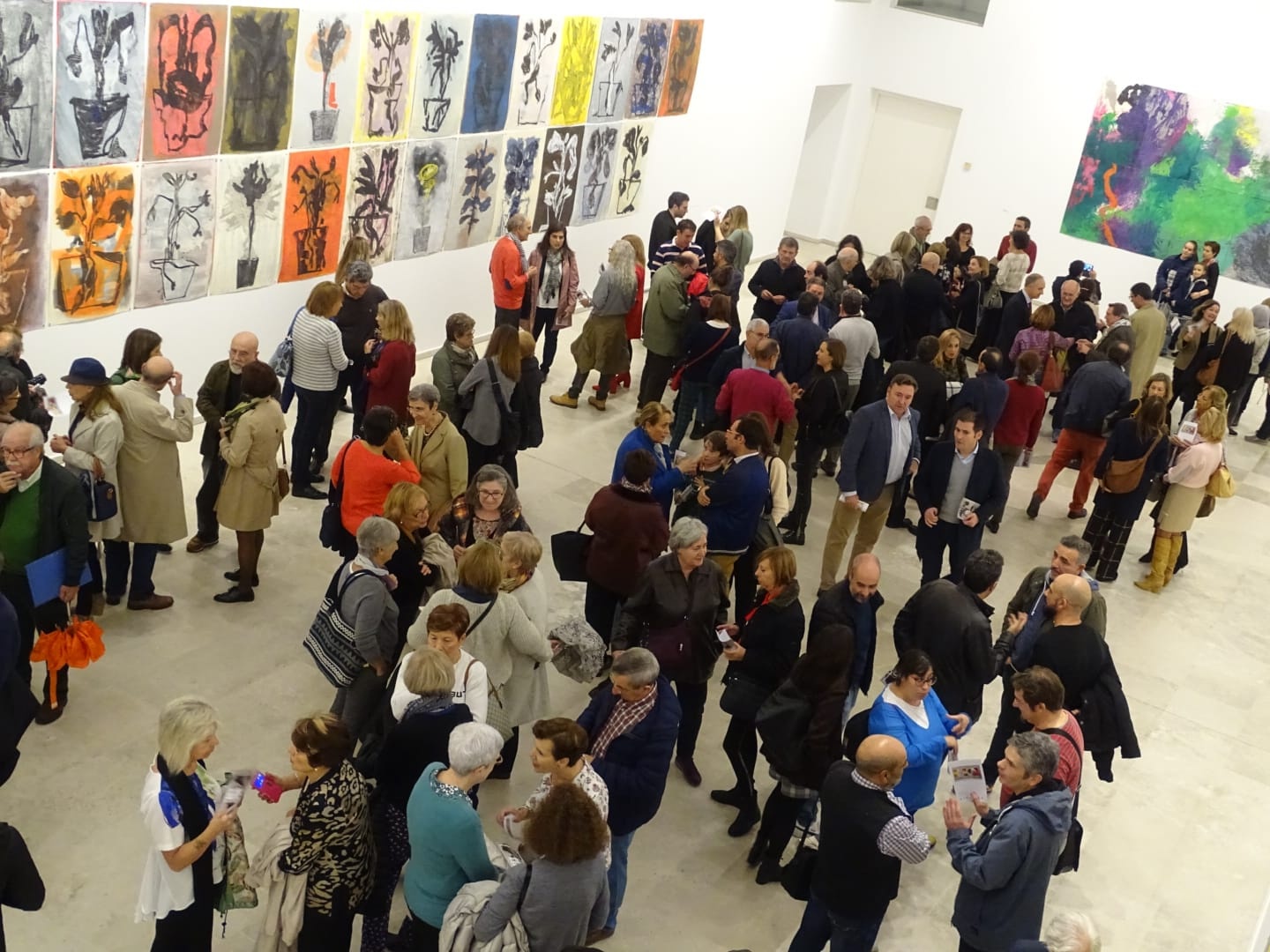The MUVa and the Patio Herreriano exhibits jointly a selection of the works of Javier García Prieto from Valladolid under the title “an irrepressible painting (un pintar indómito)”
The Museum of the University of Valladolid (MUVa) and the Patio Herreriano Museum have joined to offer the audience in their halls the exhibition “an irrepressible painting”, made by Javier García Prieto from Valladolid. His work located in the MUVa (Rector Tejerina Building Hall, in Plaza de Santa Cruz) will be exhibited until the 20th of December, from Monday to Friday from 10 to 14 pm and 18 to 21 pm; while the exhibition of the Patio Herreriano will be open until the 16th of February and the audience can visit it during the regular timetable of the museum.
The MUVa together withthe Patio Herreriano exhibit a selection of the works of Javier García Prieto from Valladolid under the title “an irrepressible painting (un pintar indómito)”
The showing is in hall 8 of the Patio Herreriano Museum, and in the Hall of the MUVa in the Rector Tejerina Building of the Palace of Santa Cruz
García Prieto was born in 1954 and his works have been exhibited in more than fifty exhibitions until he died at the beginning of this year. He was awarded in 1986 with the National Painting Award of the City of Valladolid and his works are found in different collections.
The exhibition which will be offered to the audience in both institutions, jointly and free in both headquarters, is a selection of the paintings that the artist Javier García Prieto made in the last years of work in his Studio in Velliza. This selection represents one of the highest levels of his legacy. The exhibition under the subtitle “an irrepressible painting” offers the result of the artistic activity external to the parameters which usually regulate the artistic practice. This exhibition is conceived as the sum of the set of themes to which García Prieto endeared with obsessive follow-up.
It has been selected for the Patio Herreriano museum an important number of papers from the same format, and generally, from the same thickness, something not trivial, because it tended to pour large coats of the painting above the support, always on a horizontal basis. He approached such a variety of issues (flowerpots, sheets, bothies, and forests) from multiple perspectives, although he looked them through the same point of view. It has been wanted to confirm how we can see a thousand faces in only one, always from a radical frontality.
In the hall of the MUVa, in the Rector Tejerina Building, we have selected his works, which are also obsessive and about bothies, stone hut, and shelter for shepherds. Additionally, the building contains works about fabric with the same issues that in his series: sheets, flowers, huts, forests, and faces with strange look and gestures. These works were bigger and they concentrated some of his obsessions with oil and paper, in this case in fabric. His obsessions were magnified as he was already stunned due to his plastic obsessions.
Javier García Prieto (Valladolid, 1954-2019. His career began in 1976 with an exhibition for the Caja de Ahorros Provincial of Medina del Campo, until his work “The Fractal Oder” in the Palace of Quintanar in Segovia, which took place the last year short time before it disappeared. During these more of forty years more than forty tears supported his work; among them we must underline “Figurations”, in the Caja de Ahorros Provincial of Valladolid; Palais R.iour Lille” in Lille, France in 1989; his intervention in ARCO 92 and 93 in the gallery Evalio Gayubo of Valladolid; “Sola Fides”in the Gallery Anselmo Alvárez of Madrid in 1996; “The light with the Angel” in Las Francesas Church of Valladolid or the “The poetics of the Weightless” in the Gallery Mozart of Madrid in 2014.
During his career, he utilized different techniques for his creations, from the contact impression, the drip of the exposition to the climatology, always consciously in the search of a particular texture to obtain particular creations with which he won the National Award of Painting City of Valladolid in 1986.
Several collections possess his works, such as the Council of Castile and Leon, the City Hall of Augusta (USA), the Fundación Caja España, The Collection Goldman Sachs of London, the Peter Stuyvesant collection of the Netherlands or the Museum of Modern Art of Managua (Nicaragua).


